Panchakarma & Well- Being
Welcome To
An Incredible Ayurveda experience
There are the 5 types of purificatory procedures which clean our body / eliminate the vitiated Doshas (toxins) by administering medicine. They are Vamana, Virechana, Basti, Nasya, Raktamokshana. The concept is to bring Doshas from all parts of the body to the Koshta i.e digestive tract and expel by inducing vomiting (vamana) or purgation (virechana). We carry out Panchakarma in classical way, at affordable price.
Panchakarma Therpies
- Ayurveda Has more power to heal and transform your body mind and soul to utmost state of wellness.
- TOXINS tax our body with harmful substances , this inturn speeds ageing process and carcinogenic (causes cancer and many metabolic illness like diabetes , altered fat metabolism and thyroid and weight gsin etc)
- TOXINS build in our body with a lot of junk foods and thus cleansing is a must
- Cleaning detoxes and restores body equilibrium , rejuvenates body with antioxidants ,boosts immune system , keep diseases away and regenerates the glands and organs , muscle and increase the capcity to absorb active nutrients
- Thus PANCHAKARMA – Ayurvedic Detox which literally means FIVE THERAPIES and comes under the heading of sodhana therapy (purification or detoxification therapy) which when executed in a controlled way with the help of ayurveda wisdom in a most helps to get rid of Toxins, restores body equilibrium , rejuvenates body
Panchakarma Ayurveda Panchakarma (five actions) is executed in three stages
- Purvakarma: Pre-purification preparation includes DEEPANA AND PACHANA-, SNEHAPANA, SNEHA ABHAYANGA followed by full body herbal steam (a sweating method).
- Pradhanakarma: The main Purification process includes Emesis, Purgation, Enemas, and Nasal therapy.
- Post Panchakarma: The therapies includes rasayana ( rejuvenation) and Vajikarana (Aphrodiziac Therapies ).
PURVAKARMA-PRELIM PREPARATION FOR UNDERGOING PANCHAKARMA
DEEPANA AND PACHANA- (INTERNAL PROCESSING OF TOXINS WITH HERBS)
Deepana means rekindling digestion and it involves taking herbs or doing things to improve agni (digestive and metabolic fire). The popular examples are long pepper as a drug and exercise as a lifestyle modification. Pachana means burning, where specific herbal preparations, diet and lifestyle help to burn the toxins and reduce the inflammation that happened out accumulation of toxins so that body can handle to eliminate the toxins.
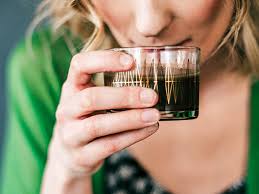

SNEHAPANA –ORAL GHEE INTAKE- facilitates toxin release and uptake
Lubrication is a great way to dislodge the micro toxins from the tissues. Here plant-based oil or animal fat is used to lubricate the body. Most of the time herbalised oils (oils/ ghee processed with herbs) are used for added benefits and making the process of lubrication specific to the health condition/ imbalance.
SNEHA ABHAYANGA
External lubrication is an indispensable part of Pancha karma. This not only helps to process and dislodge the toxins from the tissues, but also helps to relax the body, boost circulation and relive pain, so that the whole body becomes relaxed and the detox can be carried out much more efficiently. Abhyanga (tag abhyanga here please) (Ayurveda hot oil massage) is the most common form of external lubrication. Here medicated oils are used for specific health benefits. Sometimes massage is upgraded into other specific oil therapies like Pizhichil(please tag Pizhichil here) (streaming of warm oil on the body) for specific results.

SWEDANA
After or along with lubrication, sweating is induced to prepare the body for Pancha karma. Ayurveda recommends thirteen different types of sweating procedures for different conditions, body types, dosha involved and body parts.
When the patient is subjected to the appropriate sweating procedure, it helps to process the toxins (ama). Sweating helps to relax the body, boost metabolism and widen the channels and pores in the body so that toxins can flow towards gut/ skin. Once the toxins have reached gut, it is easy to eliminate them via Pancha karma,Apart from processing toxins, the process of lubrication and sweating help to relax the body and to carry out Pancha karma easily and effectively.
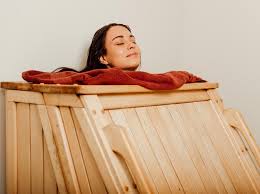
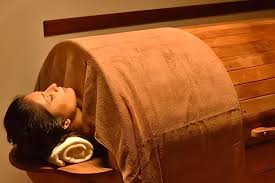
PRADHANAKARMA-PRELIM PREPARATION FOR UNDERGOING PANCHAKARMA
- Vamana- Vomiting Therapy
- Virechana – Purgation Therapy
- Nasya – Nasal Administration
- Raktamokshana /Blood Letting
- Basti chikitsa –Matra basti /Kashaya basti/Anuvasana basti
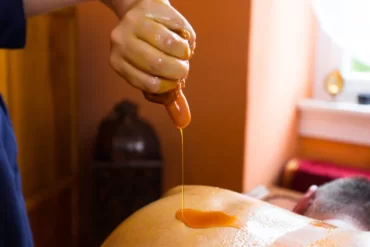 Vamana Karma, primarily a Samshodhana Karma (detoxification procedure) is one of the five Pradhana Karmas (chief procedures) of Panchakarma.
Vamana Karma, primarily a Samshodhana Karma (detoxification procedure) is one of the five Pradhana Karmas (chief procedures) of Panchakarma.
Vamana Karma means induction of emesis. It is a procedure in which Doshas (waste products or toxins) are expelled out of the body through oral route. Emesis therapy, cleanses Kapha collected in the body and decongests the respiratory tract.
Literally, Vamana Karma means to persuade therapeutic vomiting or expelling out the contents of the stomach including vitiated Doshas through oral route, which is indicated for the purification of Urdhwa Bhaga (upper part) of the body.
In Vamana, specially the Kapha and Pitta Dosha brought to Amashaya (stomach and duodenum) from all over the body by the specific pre-operative (poorvakarma) procedures and then eliminated out by inducing the emesis. It is the detoxifying procedure that should be performed only after doing snehan (both internally and externally) and swedan.
Vamana therapy is effective in Kapha predominant diseases like rheumatism, IBD, bronchial asthma, allergic bronchitis, rhinitis, sinusitis, migraine, fever, indigestion, anorexia, obesity, dyslipidemia, diabetes mellitus, acne vulgaris, severe skin diseases (psoriasis, eczema, Lichen Plannus, vitiligo etc.), urticaria, edema, filariasis, various psychological disorders, epilepsy, PCOD, infertility, thyroid disorders etc.
Ayurveda believes that the seasonal changes will influence the biological systems resulting into the accumulation and aggravation of particular Dosha in a particular season like accumulation and aggravation of Kapha in Hemant Rutu (winter season) and Vasant Rutu (spring season) respectively, accumulation and aggravation of Pitta in Varsha Rutu (rainy season) and Sharad Rutu (autumn season) respectively.
As a preventive measure, Vamana in is done in Vasanta ritu ~ spring season, approximately in the month of March and April for the elimination of vitiated Kapha Dosha which in turn helps to prevent the forth coming Kapha disorders and associated Pitta disorders.
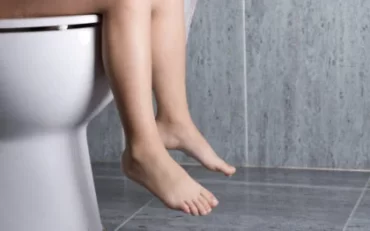 Virechana Karma is a medicated purgation process aimed at expelling doshas or toxins through the lower pathways i.e. anus. It is the most widely used detoxification procedure especially for Pittaj disorders.
Virechana Karma is a medicated purgation process aimed at expelling doshas or toxins through the lower pathways i.e. anus. It is the most widely used detoxification procedure especially for Pittaj disorders.
Virechana should be performed only after doing snehan (both internally and externally) and swedan and preferably after Vamana therapy.
Virechana is less stressful procedure than Vamana Karma. It has less possibility of complications and could be done easily. So it is widely used as Shodhana therapy in routine. It is more acceptable to all classes of patients. In an addition to the acceptability and popularity, the Virechana is considered as the best treatment for morbid and increased Pitta Dosha.
Virechana karma is effective in treating digestive disorders, hyperacidity, constipation, jaundice, hepatomegaly, chronic liver diseases, splenomegaly, fistula in ano, haemorrhoids, severe skin diseases (psoriasis, eczema, Lichen Planus, vitiligo, erysipelas etc.), headache, chronic fever, diabetes, asthma, paraplegia, hemiplegia, tumours, cysts, gout, edema, elephantiasis, intestinal worms, psychological disorders, epilepsy, gynaecological disorders, infertility, thyroid disorders etc…
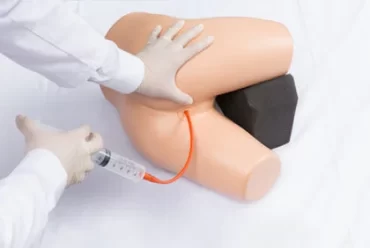 Basti Karma is a specific therapeutic procedure, in which medicines are administered into body through lower pathways, most often through anus. It cleanses the accumulated toxins from all over the body.
Basti Karma is a specific therapeutic procedure, in which medicines are administered into body through lower pathways, most often through anus. It cleanses the accumulated toxins from all over the body.
Some times medicines are also administered by other routes, like Urethra or vagina, then this procedure is termed as Uttara Basti.
Basti is primarily administered to treat vata dosha but can be tridoshahara in nature and can produce both samsodhana or shamana effects. It is also highly beneficial in rejuvenating treatment, especially in convalescence.
Basti karma is considered as the most important procedure in five fold Panchakarma therapy. The word Basti, stands for a special instrument used for enemata therapy.
It is effective in majority of vata conditions like Parkinson’s disease, MND/ALS, multiple sclerosis, paralysis, fibromyalgia, back pain, neck pain, slip disc, sciatica, atrophy, arthritis, rheumatic diseases, neurological diseases, gout, diseases of GIT, splenomegaly, intestinal worms, fistula in ano, fever, psychiatric problems, gynaec problems, infertility etc.
Basti is of three types –
- Asthapana or Kashaya Basti
- Anuvasana or Sneha Basti
- UttaraBasti.
‘Uttara Basti’ is an exclusive type of basti upa-krama, can be defined as a therapeutic administration of a specific medicinal oil, ghrita or decoction through urethral route in males and urethral or genital route in females. Uttara Basti has been highly successful treatment for the management of most of the uro-genital, fertility and gynecological disorders.
| Uttara basti | 1 unit | 30-45min | 5130±steriles |
| vamanam Karma+kalpa(Therapeutic vomiting) | 1 unit 1 course 1 course | 2-3 hr 5 days 9 days | 5930 10680 13330 |
| virechana Karma+kalpa(Therapeutic puragation) | 1 unit | 10min | 2440 |
1 course | 9 days | 12800 | |
1 course | 5 days | 7190 |
| Basti | |||
| Anuvasana-Internal Oil Basti (Intra Rectal Medication) | 1 unit | 20-30min | 880+steriles |
| Asthapana-Internal Kashay Basti (Intra Rectal Medication) | 1 unit | 20-60 min | 1380+steriles |
| Basti Classic | 1 unit | 8 days | 31080 |
| Basti basic | 1 unit | 8 days | 16542 |
Nasya
Nasya Therapy is a sinus therapy with herbal Oil. Your nose is the doorway to the brain as well as the doorway to consciousness. Prana, the life force, enters your body through each breath taken in through your nose.
This therapy consists of an application of herbal oils into the nostrils and stimulation of Marma points around your face.
| Nasya+gandusha/kavala+ dhoompana | 1 unit | 45min | 1220+200 |
| 1 course | 8 days | 8784+1440 | |
| 1 course | 16 days | 16300+2880 |

Naasapaana -a unique treatment at Ayurvaidya healthcare
Successfully treated frozen shoulder
Raktamokshana

Raktamokshana Therapy is an Ayurvedic medicinal procedure that involves removing extra or impure blood from the body. Rakta, which means blood in Sanskrit, and mokshan, which means elimination, make up the phrase Raktamokshana.
Raktamokshana steps in to help when excess rakta and pitta toxicity has developed to the point where it cannot be treated with herbs or any other method.
Raktamokshana Types
Ayurveda provides a number of methods for bloodletting, or Raktamokshana, including:
1. Jaloukavacharana (Leech therapy): The use of medicinal leeches to suck away impurities from the afflicted region.
2. Prachchhanna: A technique for drawing blood locally that entails using a surgical blade or needle to make a few tiny punctures on the injured region.
3. Siravyadha: The removal of unclean blood by the pricking of veins using a particular tool.
4. Alabu: The application of a suction cup to the injured region in order to generate negative pressure and draw out contaminated blood.
5. Shringa: The removal of unclean blood from a region by creating a vacuum with the horns of certain animals.
- Which disease can be cured by Raktamokshana?
- Gout
- High Blood Pressure
- Skin Discomfort
- Psychological Problems
- Allergies
- Headaches
- Hypertension
- Joint Problem
- Raktamokshana Treatment
benefits
Helps in skin disorders
Helps in joint problems
Helps in circulatory issues
Helps in metabolic disorders

Jalaukaavacharana
Jalaukavacharana (leech therapy) is a non-surgical type of Raktamokshana and considered as the most unique and effective method of bloodletting. Leeches are widely used in most of the disorders ranging from skin disease to Ischemic heart disease with evidence of successful results. Used in Abscess, Piles, Skin Disease Infective Arthritis, Osteo-Arthritis, Goiter, Eye Disease, Nodular Swelling, Cancer, Pyorrhea, Bleeding Gums, Stomatitis, Excessive Sleepiness, Diabetic Foot Ulcer.
| Jalaukaavacharana(Leech therpy) | 1 unit with 1 Leech | 1 day | 930 |
Siravyadha
The removal of unclean blood by the pricking of veins using a particular tool.


Alabu
The application of a suction cup to the injured region in order to generate negative pressure and draw out contaminated blood.
Shringa
The removal of unclean blood from a region by creating a vacuum with the horns of certain animals.

Prachhanan
A technique for drawing blood locally that entails using a surgical blade or needle to make a few tiny punctures on the injured region.
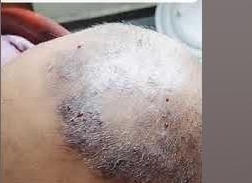
Osteomyelitis

Osteomyelitis successfully treated at Ayurvaidya healthcare
Osteomyelitis case suggested for amputation of foot in diabetic patient completely resolved by Ayurveda at Ayurvaidya healthcare
Diseases occurring due to vitiation of blood and pitta shall be dealt with bloodletting.
Raktamokshana is effective in conditions like allergies, tonsillitis, sciatica, gout, acne, migraine, eczema, psoriasis, Lyme disease, filariasis, glaucoma, liver & spleen disorders, osteoarthritis, rheumatoid arthritis, frozen shoulder, rheumatic disease, diabetic wounds, non-healing ulcers, varicose veins, elephantiasis, abscesses, tumours, erysipelas, sexually transmitted diseases, breast diseases, hypertension, thrombosis (blood clot), and alopecia, psychological problems, vishamjwar (fever), epilepsy etc.

Seasonal panchakarma
Ayurveda aims at maintaining a good and healthy life.Seasonsal variation in doshic equilibrium occurs which leads to health issues. So for maintainance of doshic equilibrium, Ayurveda suggests opting seasonal panchakarma or detox which keeps our body free from body toxin. For seeking this object, following detox are suggested to be followed according to the different seasons so that thew imbalance of transition will not affect us
| Sr.No | Package | Treatments |
|---|---|---|
| 1 | Spring (Vasant) Mid- March to Mid-May | Vaman Package (upto 8 days |
| 2 | Summer (Greeshma) Mid- May to Mid- July |
Takradhara |
| 3 | Monsoon (Varsha) Mid- July to Mid- September |
Yog Basti Package (8 days) |
| 4 | Autumn (Sharad) Mid- September to Mid- November |
Virechan Package (upto 8 days |
| 5 | Early Spring (Shishir) Mid- January to Mid- March | Abhyangam, Ubtan, Shirodhara |
| 6 | Winter (Hemant) Mid- November to Mid- January |
Abhyangam, Ubtan, Shirodhara |

PASCHATKARMA-POST PANCHAKARMA PROCEDURE
After the main procedure of pancha karma is done, Ayurveda recommends to slowly ease back to normal lifestyle by taking the same number of the days so that body rest and get time allow time to absorb the benefits of Pancha karma. After Pancha karma body can be at ease with slow digestion. So a person is recommended to follow an easy and clean diet and lifestyle according to the principles of Ayurveda to bring the best out of Pancha karma. This is called samsarjana kriya (diet after Panchakarma).
RASAYANA (REJUVENATION)
After pancha karma, it is time to nourish tissues. Rasayana is the 7thanga (limb) of Ayurveda, that explains ways to improve wellness, immunity, strength and youthfulness. Rasa means the juice and ayana means the rituals, so this limb of Ayurveda explains how we can maintain ourself juicy (as we age, we shrink) and vibrant, both physically and mentally. Ayurveda recommends diet, lifestyle, herbal jams, specific rejuvenating herbs and massage therapies (like shashtika shali pindasweda, pizhichil, etc please tag them here) for rasayana. It is important to cleanse the body before doing rasayana so that body can process rasayana better. As rasayana is heavy in nature, the rasayana medications can make the body sluggish. This affects digestion and metabolism and increases toxin accumulation in the body.


VAJIKARANA (IMPROVING SEXUAL HEALTH AND FERTLITY)
Sukra, the reproductive tissues are considered as the seventh and deepest of all tissues in human body. So when the body is accumulated with toxins, they are the most affected tissues reducing virility and fertility and causing hormonal, sexual health and fertility problems. Vajikarana, the eighth limb of Ayurveda explains specific care and therapies to improve sexual health. After pancha karma, vajikarana is recommended along with rasayana therapies for rejuvenation and improved sexual health and fertility. Vajikarana involves herbal formulations, massage therapies and diet.
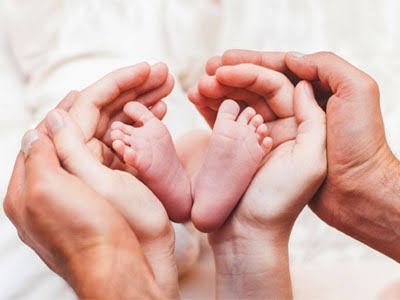
INFERTILITY PACKAGE
Infertility case suggested for surrogacy after 5 iui and 3 IVF session, a case of azoospermia and tubal block , PCOD , low endometrial thickness successfully treated at Ayurvaidya healthcare in 8 months

PREMARITAL PACKAGE
Pre marital couple package / Married couple Package (For reproductive health )- Beneficial for getting a healthy progeny , avoids chromosomal abnormalities, avoid hereditary disorders and birth defects in the forecoming progeny. This package helps getting healthy ovum and sperm and also healthy uterus for implantation of the conceived matters
Ayurveda and Panchakarma treatments

Polycystic ovarian disease/syndrome which can only be maintained in allopathic science with harmonal supplements can be totally reversed without surgery and with no recurrence with resort to Ayurveda detox /panchakarma procedure and lifestyle changes in particular to panchakarma diet regime of Ayurvaidya healthcare Exclusive

Uterine fibroid successfuly treated at Ayurvaidya healthcare Bangalore
Uterine fibroid if managed by Ayurveda detox regime shows total reduction of symptoms with even reversal in ultrasound reports
1. Piles fistula surgery center
2. Detox center
3. Rejuvenation center
4. Center for wellness
5. Pediatric care center
6. Allergy recovery center
7. Pain relief center
Spinal rehab centre
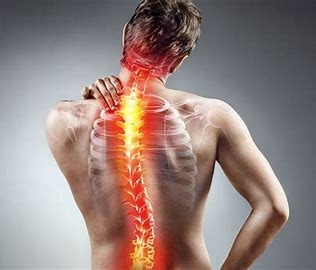
In Ayurveda, the approach to spinal health involves a combination of holistic practices, including lifestyle modifications, diet, herbal remedies, and specific therapies. Keep in mind that Ayurvedic treatments are highly individualized, and it is essential to consult with an experienced Ayurvedic practitioner for personalized advice. Here are some general principles and therapies that may be considered for spinal rehabilitation in Ayurveda
Gastroentero ayurveda recovery center
Consultation with an Ayurvedic Practitioner:
- An Ayurvedic practitioner will assess your overall health, dosha imbalance, and the specific issues related to your digestive system.
- The treatment plan will be tailored to your unique constitution (Prakriti) and current imbalances (Vikriti).
Dietary Guidelines:
- Ayurveda emphasizes the importance of a proper diet in maintaining digestive health.
- Recommendations may include eating according to your dosha, favoring easily digestible foods, and avoiding incompatible food combinations.

Psoriasis ezema skin treatment centre
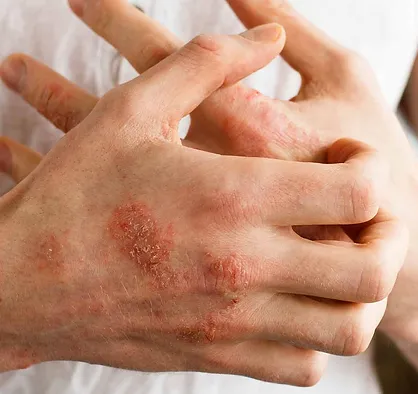
Dosha Assessment:
- Ayurvedic practitioners assess the individual’s dosha constitution (Vata, Pitta, Kapha) to understand the underlying imbalances contributing to skin issues.
Dietary Guidelines:
- Recommendations for a dosha-balancing diet, emphasizing foods that pacify aggravated doshas and avoid triggering factors.
- Inclusion of anti-inflammatory and detoxifying foods, such as bitter vegetables, turmeric, and ghee.

